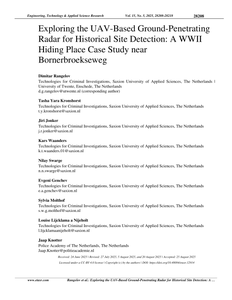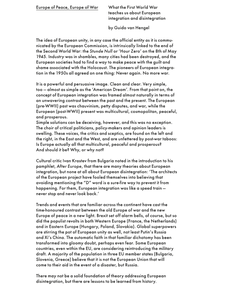Even though more than seventy-five years have passed since the end of WWII, its prominence in entertainment media productions along with the global emergence of memorial markers have contributed to its omnipresence in people’s minds. Nevertheless, the perception of this historical event is still far from reaching consensus as nations tend to interpret and remember episodes in accordance with their perspective, thus adding up to the complexity of WWII and of Holocaust memories. With this in mind, this article describes the idiosyncrasies of Portugal’s recent tribute and remembrance strategies for the victims of WWII. The country’s neutral status, along with a set of cultural and historical specifics, has led to the dissemination of tropes leading to the idea of Portugal as an inherently tolerant and mild-mannered nation. A perception that is often fostered by resorting to monuments, museums, tourism and leisure activities. Despite evidence provided, mostly, by recent academic studies and documentary films, these tropes continue to fuel Portuguese popular imagination and are still prevalent in some recently established WWII memory places.
DOCUMENT
On the issue of Displacement and placemaking and selectivity of memories and narratives of WWII in Portugal by using Vilar Formoso's Museum as a case study.
DOCUMENT
On the issue of Displacement and placemaking and selectivity of memories and narratives of WWII in Portugal by using Vilar Formoso's Museum as a case study.
DOCUMENT
This study evaluates the potential of Unmanned Aerial Vehicle-based Ground-Penetrating Radar (UAV-GPR) for identifying buried features related to a suspected World War II (WWII) hiding place near Bornerbroekseweg, the Netherlands. The survey area is an active farmland field with limited surface indicators and partially documented historical significance. A total of six UAV flight lines and four ground-based GPR paths were conducted to cover the site. Subsurface anomalies were identified at depths between approximately 0.2 and 1.5 m. In particular, Flight 6 revealed a near-surface reflection at 0.2–0.4 m, whereas Flight 4 showed a deeper horizontal anomaly at around 1.2–1.5 m. Ground-based Path 3 supported these findings with continuous horizontal reflections distinct from natural stratigraphy. The integration of UAV and ground-based data enabled full-site coverage and localized resolution, supporting the identification of areas warranting further archaeological investigation. The results demonstrate the applicability of UAV-GPR for non-invasive prospection in rural historical sites with uncertain spatialrecords and suggest its value for informing targeted excavations.
MULTIFILE

DOCUMENT
The idea of European unity, in any case the official entity as it is communicated by the European Commission, is intrinsically linked to the end of the Second World War: the Stunde Null or 'Hour Zero' on the 8th of May 1945. Industry was in shambles, many cities had been destroyed, and the European societies had to find a way to make peace with the guilt and shame associated with the Holocaust. The pioneers of European integration in the 1950s all agreed on one thing: Never again. No more war. It is a powerful and persuasive image. Clean and clear. Very simple, too - almost as simple as the 'American Dream'. From that point on, the concept of European integration was framed almost naturally in terms of an unwavering contrast between the past and the present. The European {pre-WWII) past was chauvinism, petty disputes, and war, while the European {post-WWII) present was multicultural, cosmopolitan, peaceful, and prosperous. Simple solutions can be deceiving, however, and this was no exception. The choir of critical politicians, policy-makers and opinion leaders is swelling. These voices, the critics and sceptics, are found on the left and the right, in the East and the West, and are unfettered by post-war taboos: Is Europe actually all that multicultural, peaceful and prosperous? And should it be? Why, or why not? LinkedIn: https://www.linkedin.com/in/guido-van-hengel-8312729/
DOCUMENT

Most European countries have to find a delicate balance between long term economic reform and short term impact on GDP.
DOCUMENT

Biographical information of Jan Floris de Jongh
DOCUMENT

Technology, data use, and digitisation are based on mathematical structures, and this permeates many aspects of our daily lives: apps, online activities, and all kinds of communication. Equipping people to deal with this mathematisation of society is a big challenge. Which competences are needed, which skills must be mastered? Which dispositions are helpful? These are the questions that matter in the development of adult education. The concept of numeracy is mentioned already for many years as a possible useful approach to equip adults with the necessary skills. In this paper we will argue that is only true when numeracy is defined as a multifaceted concept which combines knowledges, skills, higher order skills, context and dispositions.
DOCUMENT
